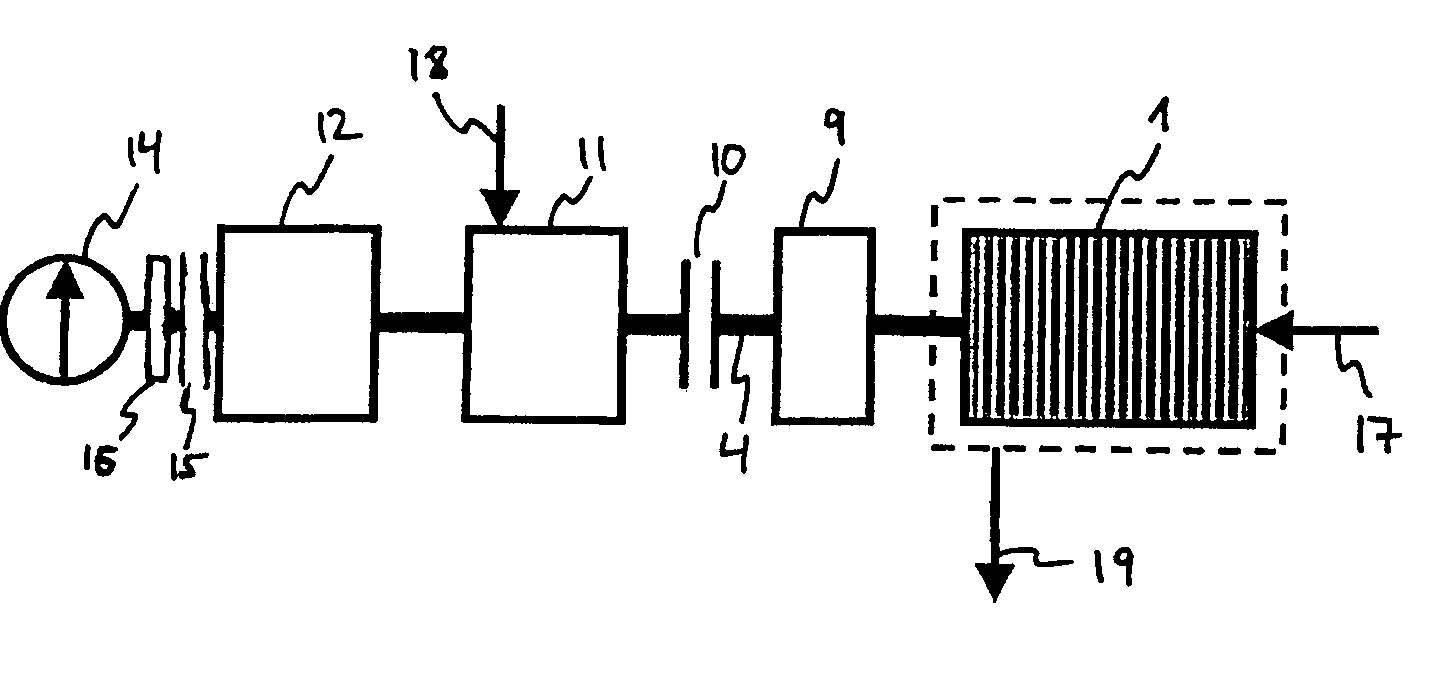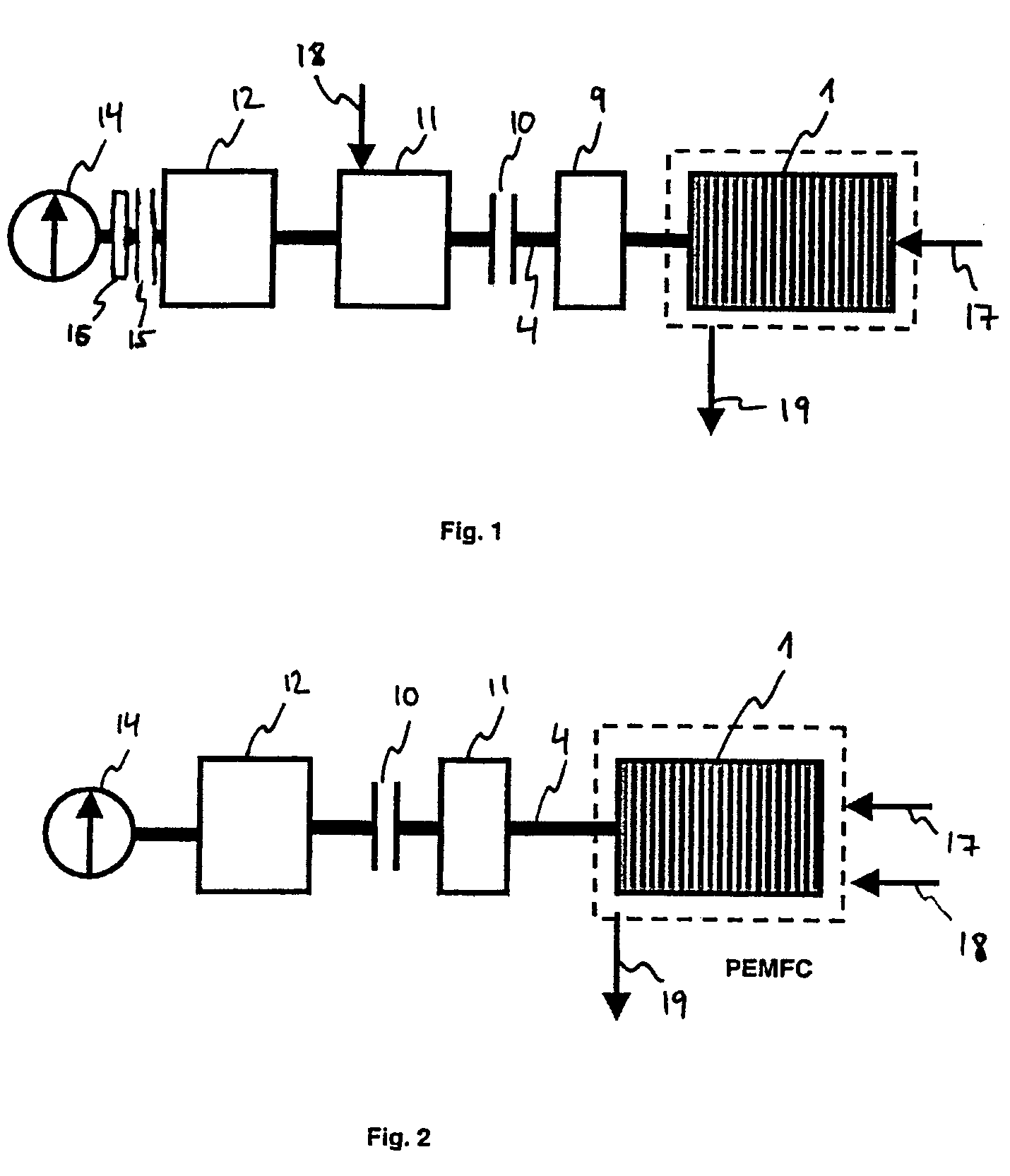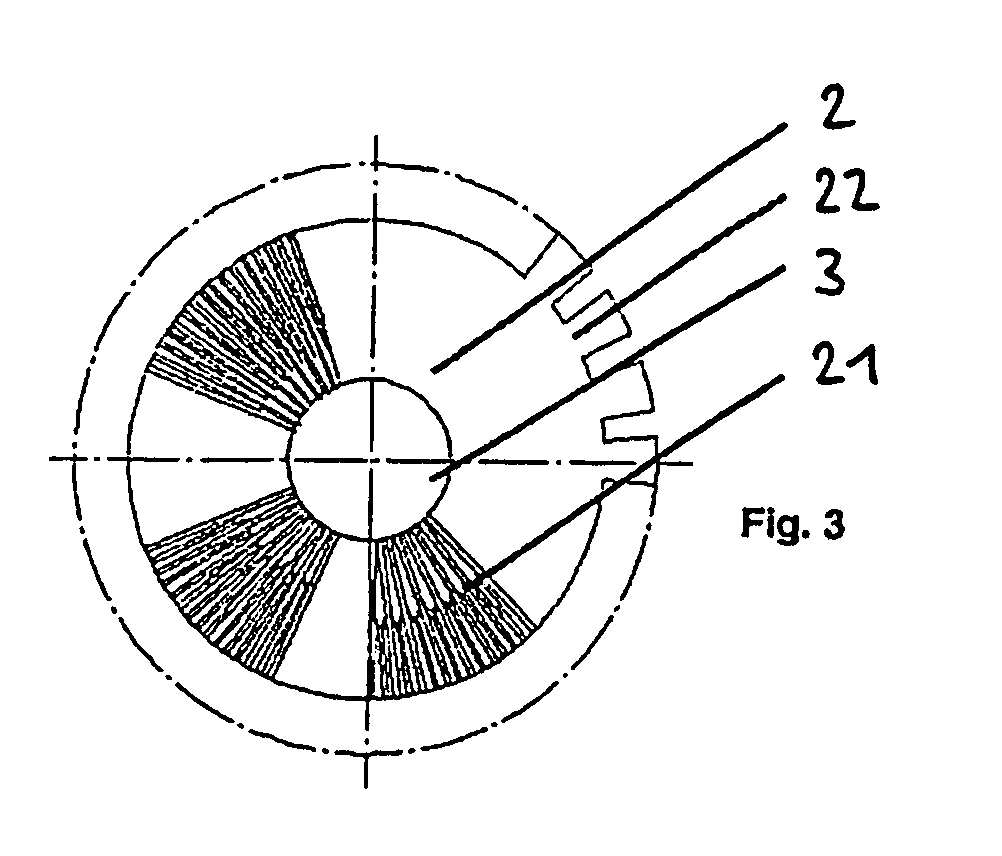Rotatable fuel cell system
a fuel cell and rotating technology, applied in the field of rotating fuel cell systems, can solve the problem of insufficient air stream generated by the compressor for optimal operation
- Summary
- Abstract
- Description
- Claims
- Application Information
AI Technical Summary
Benefits of technology
Problems solved by technology
Method used
Image
Examples
Embodiment Construction
[0036]In the following description of the figures the same reference signs are used for identical or similar elements.
[0037]FIG. 1 shows a first diagrammatic view of a fuel cell system according to an embodiment of the present invention. As shown in FIG. 1, the fuel cell system comprises a proton exchange membrane fuel cell (PEMFC) 1, an electric motor 12, a compressor 11, a clutch 10, a torque converter 9 and a pump 14.
[0038]By way of a corresponding line, hydrogen 17 is fed to the fuel cell 1, and by way of a corresponding other line, humid air 19 is removed from the fuel cell 1. In this arrangement, the feeding in of hydrogen 17 is by way of a hollow shaft (not shown in FIG. 1) which forms part of a main shaft 4. The hydrogen is then fed to an anode (not shown in FIG. 1) of the fuel cell 1 so that an electrochemical reaction within the fuel cell can take place, by way of which reaction electrical energy and water are generated.
[0039]The water that arises in the cathode of the fue...
PUM
| Property | Measurement | Unit |
|---|---|---|
| electrical energy | aaaaa | aaaaa |
| mechanical energy | aaaaa | aaaaa |
| energy | aaaaa | aaaaa |
Abstract
Description
Claims
Application Information
 Login to View More
Login to View More - R&D
- Intellectual Property
- Life Sciences
- Materials
- Tech Scout
- Unparalleled Data Quality
- Higher Quality Content
- 60% Fewer Hallucinations
Browse by: Latest US Patents, China's latest patents, Technical Efficacy Thesaurus, Application Domain, Technology Topic, Popular Technical Reports.
© 2025 PatSnap. All rights reserved.Legal|Privacy policy|Modern Slavery Act Transparency Statement|Sitemap|About US| Contact US: help@patsnap.com



